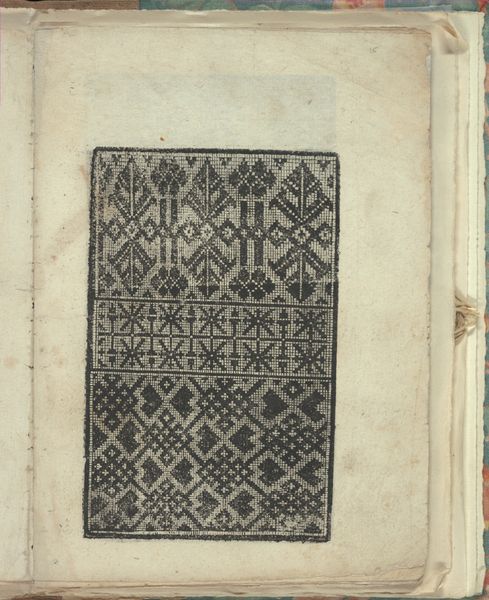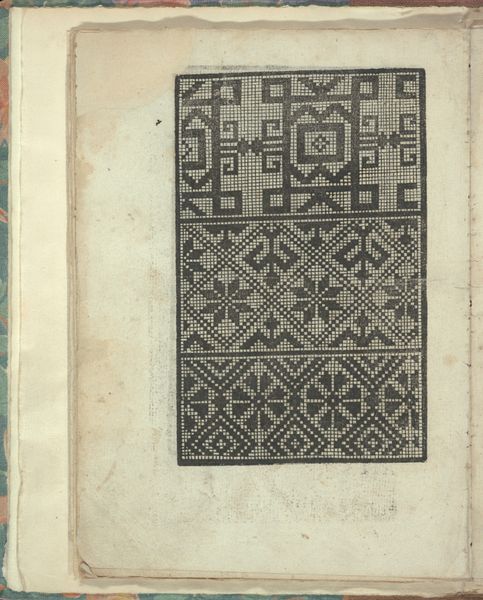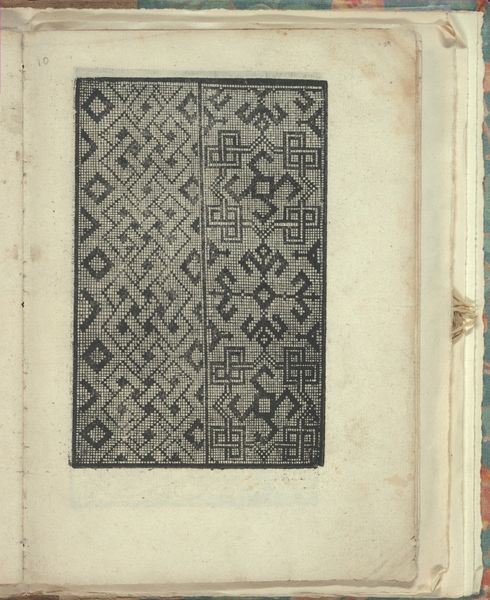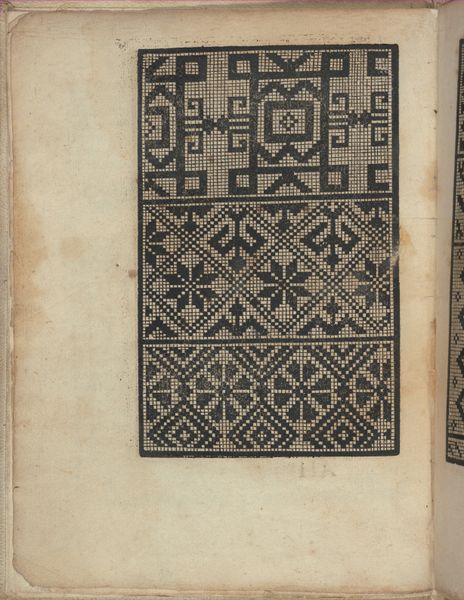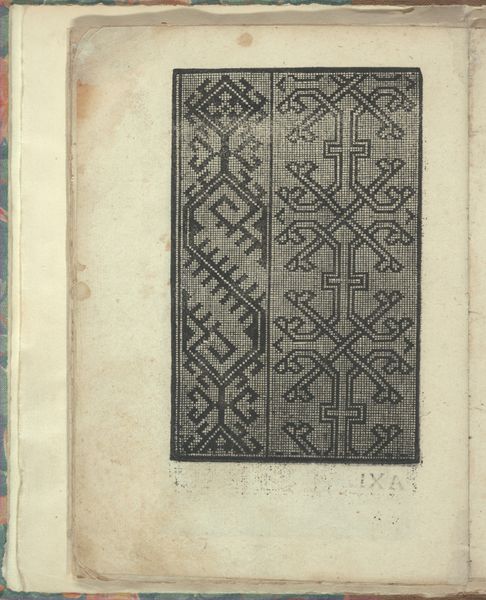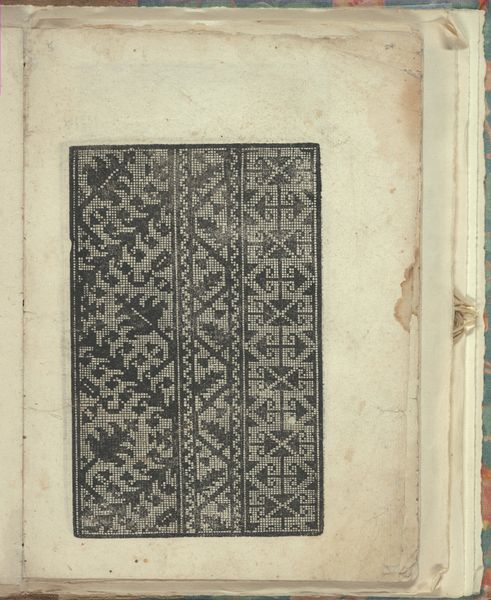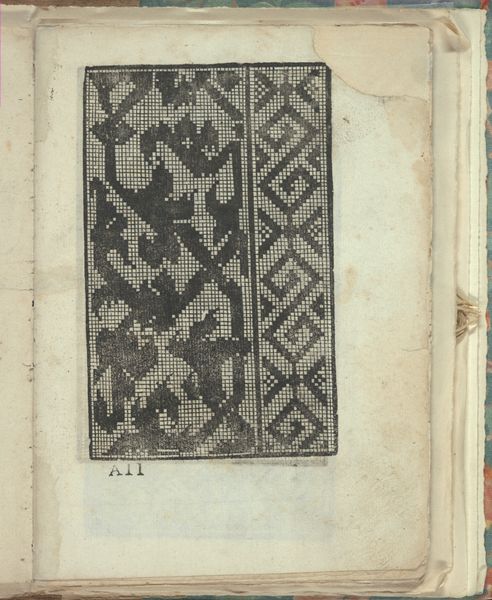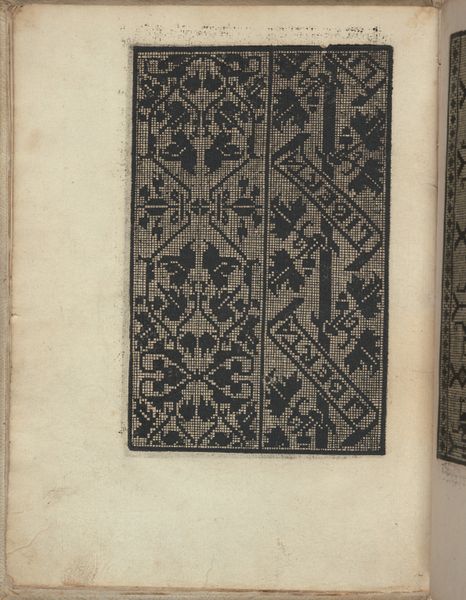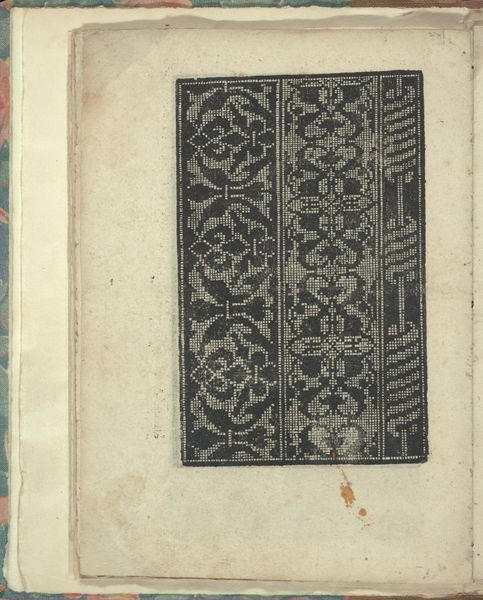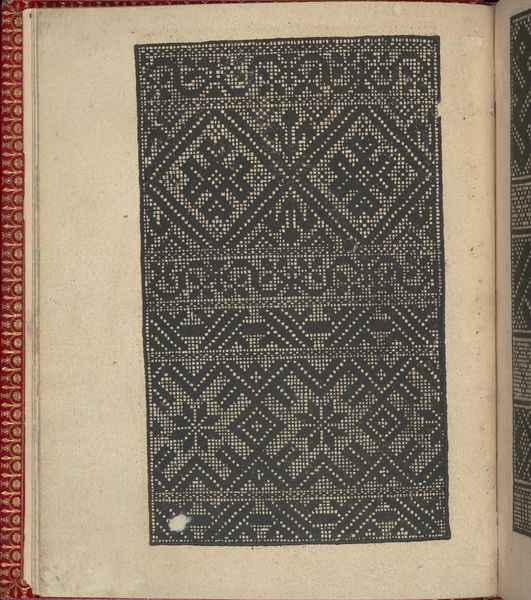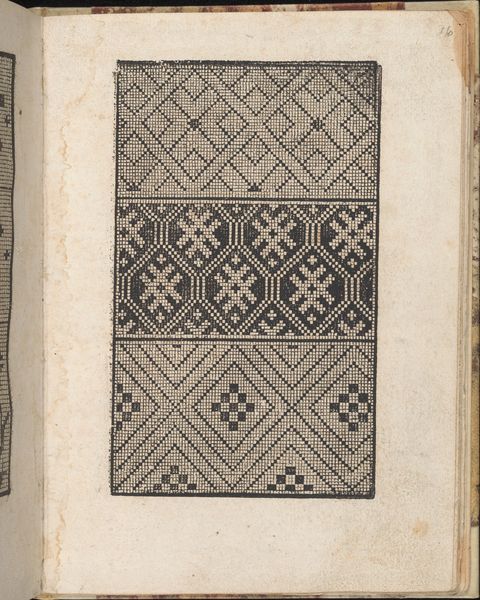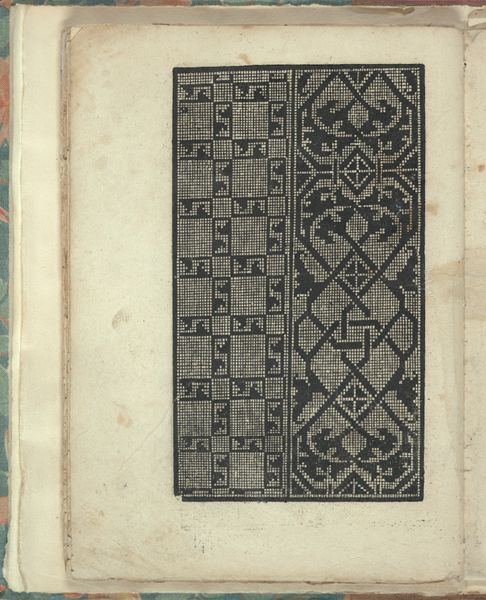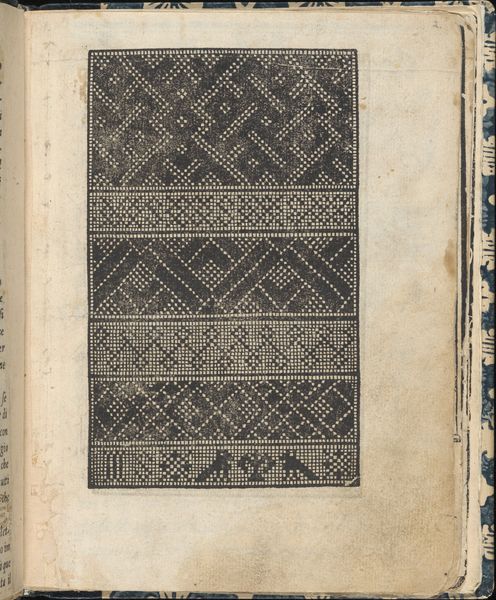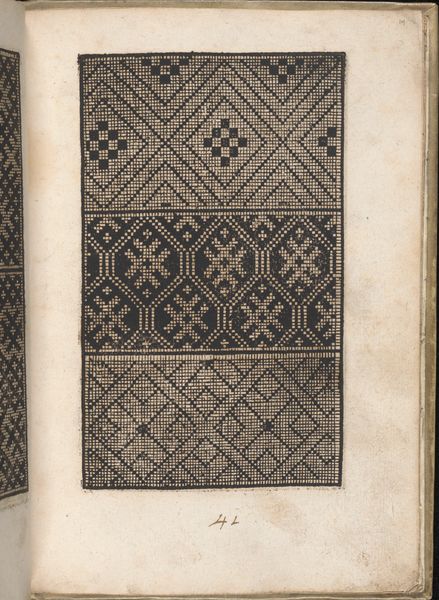
Opera Nova Universali intitulata Corona di racammi, page 13 (verso) 1530
0:00
0:00
drawing, ornament, print, textile, woodcut
#
drawing
#
ornament
#
toned paper
#
ink paper printed
# print
#
book
#
textile
#
11_renaissance
#
geometric
#
woodcut
#
italian-renaissance
Dimensions: Overall: 8 7/8 x 6 7/8 in. (22.5 x 17.5 cm)
Copyright: Public Domain
Curator: So, here we have a page from Giovanni Andrea Vavassore’s "Opera Nova Universali intitulata Corona di racammi," created around 1530. It's a woodcut, meant as a guide for textile work. Editor: My first impression is a sense of groundedness and almost... austerity. The high-contrast black and white, the repeating geometric patterns – it feels like a very structured, disciplined aesthetic. Curator: Exactly! These pattern books were incredibly important. They weren't just pretty pictures; they were crucial tools for spreading design and skills across regions, for both professional and amateur embroiderers. Imagine trying to invent every pattern yourself! Editor: Right, it speaks to access and labor. Embroidery and lace making, for example, were critical forms of women’s labor in the early modern period, both within and outside the household. Pattern books like this were a direct link to economic empowerment and creative expression. How amazing to have control over something as detailed as these needlework patterns! Curator: Indeed, each geometric element carefully rendered using a print medium to later emerge as tangible textile patterns under deft and often diligent hands. It almost feels like a mathematical poem, the way shapes intertwine and repeat, wouldn’t you agree? Editor: I love that! But beyond the geometry, it also makes me consider the socio-economic implications. These patterns, reproduced across Europe, homogenized certain visual languages, which may have also erased distinct cultural identities embedded in local designs and craft traditions. The power dynamics there are truly fascinating. Curator: True, diffusion can simultaneously democratize and standardize. But imagine the individual stories woven into these replications! Each stitch, each variation... it becomes a dialogue across time. Editor: Absolutely. It’s a powerful reminder that even the most seemingly "simple" or "decorative" arts have profound historical weight. And those star patterns are so nice! Curator: It does invite introspection about our creative inheritance. Makes you wonder what patterns we will leave behind and how people of the future will perceive them. Editor: Right! And how those patterns, so seemingly fixed, will evolve as they pass through new hands, new contexts. It really illuminates the enduring, complex relationship between art, labor, and identity. Curator: Beautifully said, it's as if the silent echoes within these designs beckon us to listen, feel, and understand more profoundly.
Comments
No comments
Be the first to comment and join the conversation on the ultimate creative platform.
